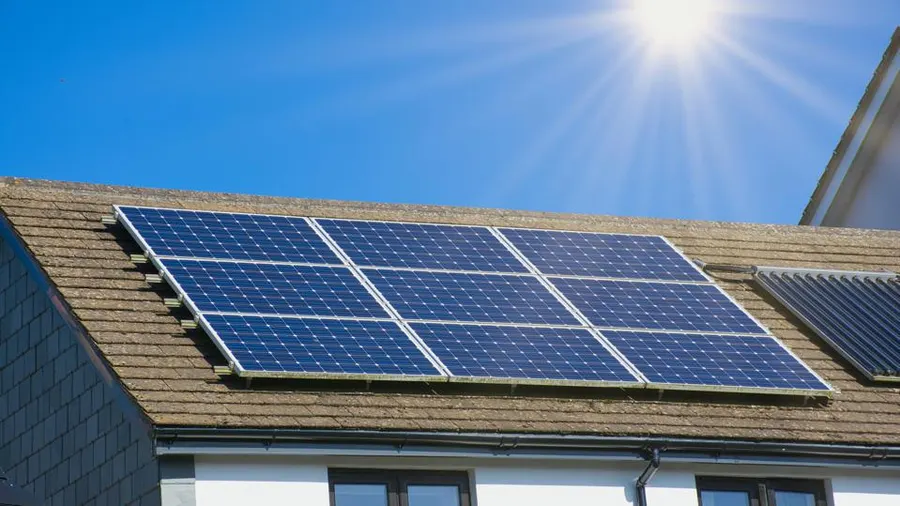The increasing demand for clean, renewable energy has prompted a surge in the development of solar energy solutions. As a result, solar power has become an increasingly attractive option for homeowners and businesses alike. However, the solar installation cost remains a significant hurdle for many potential buyers. Solar companies have developed various financing options to overcome this challenge that make solar energy more accessible. We will explore how these financing options are helping people switch to solar power without the burden of significant upfront costs.
Solar Loans: Spreading the Cost Over Time
Solar loans have emerged as a popular way to spread the cost of solar installation over time, making it a more viable option for many households and businesses. With a solar loan, customers can borrow the money needed to pay for their solar system upfront and then pay it off over several years, much like a traditional mortgage or car loan. These loans often come with lower interest rates and flexible terms, allowing homeowners to pay less than they would for traditional electricity sources. The significant advantage of a solar loan is that, in many cases, the monthly loan payments are lower than the previous utility bills, meaning customers can start saving money on energy costs immediately.
Customers retain ownership of the equipment by financing their solar systems through loans. This benefits them directly from tax incentives, rebates, and energy savings. As solar technology becomes more efficient, these loans make it easier to manage the cost of a long-term investment. They also allow individuals to break free from fluctuating energy prices, offering predictable and stable monthly payments for their energy needs. With some solar loans requiring little or no down payment, more homeowners are encouraged to adopt solar power, further driving the growth of renewable energy.
Solar Leases and Power Purchase Agreements (PPAs): Reducing Initial Costs
Solar leases and Power Purchase Agreements (PPAs) are two additional financing options that solar companies offer to make solar more affordable. Both options allow homeowners and businesses to install solar panels with little to no upfront cost. Under a solar lease, the homeowner leases the solar panels from a solar company and pays a fixed monthly fee for using the system. In contrast, a PPA involves the customer purchasing the electricity the solar system generates at a predetermined rate. The solar company retains ownership of the panels under both arrangements, meaning the customer benefits from clean energy without the responsibilities of maintaining or repairing the equipment.
One of the key benefits of these arrangements is that they significantly lower the barrier to entry for customers who may need more capital for a large upfront purchase. The fixed monthly payments also help customers avoid fluctuating energy prices and lock in lower rates than what their local utility may offer. While the customer may not own the solar system, they still experience reduced energy bills and the satisfaction of using a renewable energy source. Additionally, since solar companies are responsible for system maintenance and repairs, customers can enjoy hassle-free clean energy with minimal ongoing costs.
However, solar leases and PPAs typically offer fewer financial incentives than owning the system outright. For example, customers do not qualify for federal tax credits, rebates, or other incentives. Despite this, solar leases and PPAs remain popular, particularly for individuals seeking a low-risk, low-commitment option to embrace renewable energy. They allow customers to transition to solar power while reducing the financial burden and complexity associated with system ownership.
Government Incentives and Tax Credits: Boosting Affordability
Government incentives and tax credits have played a critical role in making solar energy more affordable. These programs encourage the adoption of renewable energy by offering financial benefits to individuals and businesses that install solar systems. One of the most well-known incentives is the federal Solar Investment Tax Credit (ITC), which allows homeowners to deduct some of their solar installation costs from their federal taxes. While the ITC percentage has decreased in recent years, it remains a valuable tool for reducing the overall cost of solar systems.
In addition to the federal ITC, many state and local governments offer additional rebates, incentives, or performance-based rewards for solar adopters. These programs can further reduce the initial solar installation cost, making it more attractive to individuals who might otherwise be hesitant due to the upfront expense. For example, some states offer performance-based incentives (PBIs) that provide payments based on the energy the system generates over time. These incentives, combined with the long-term energy savings solar systems offer, can significantly improve the return on investment for homeowners and businesses alike.
The availability of government incentives also helps to make solar financing options more appealing. When combined with solar loans, leases, or PPAs, these incentives can lower the overall cost of solar energy and reduce the financial burden on consumers. By taking advantage of these programs, solar customers can save money on both their installation and long-term energy costs, making renewable energy a viable and attractive option.
As the demand for clean energy grows, solar companies like North Valley Solar Power continue to develop innovative financing options to make solar energy more affordable and accessible. Through solar loans, leases, PPAs, and subscription models, customers can access renewable energy without the high upfront costs traditionally associated with solar power. Combined with government incentives and tax credits, these financing options enable more individuals and businesses to embrace solar energy and reduce reliance on traditional fossil fuels. As a result, solar energy has become an increasingly viable and attractive option for many, helping to drive the transition to a more sustainable future.
